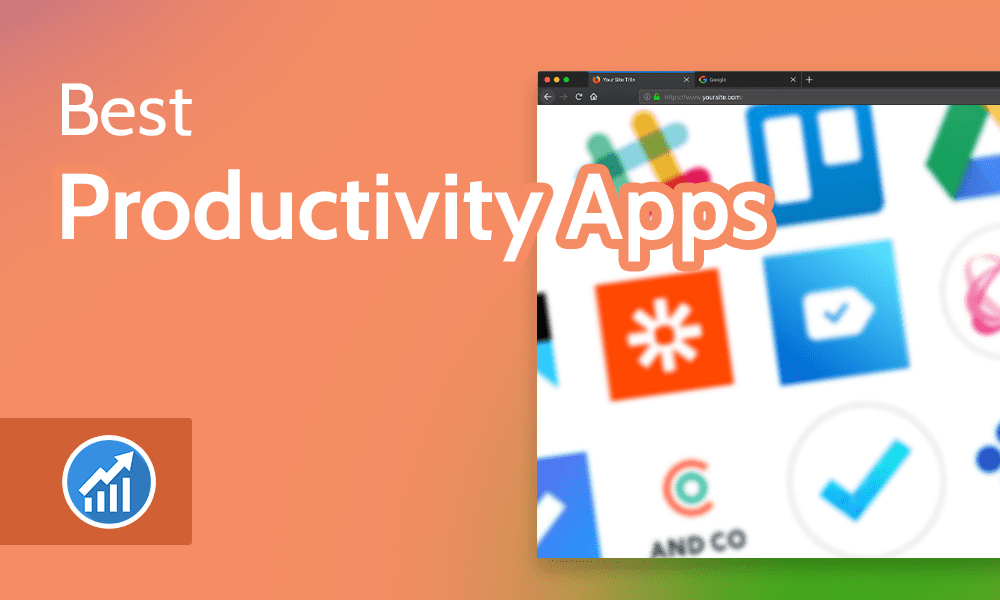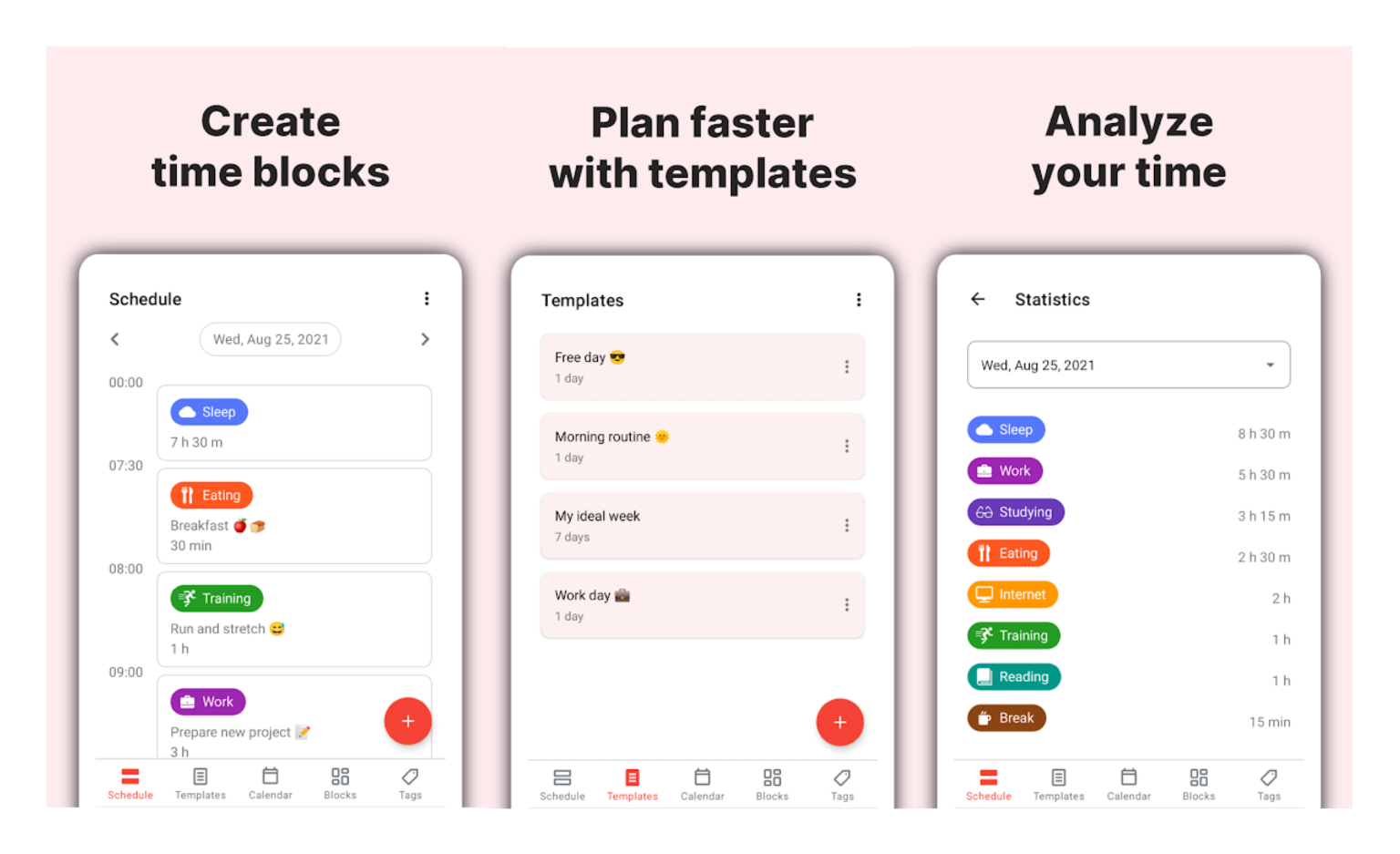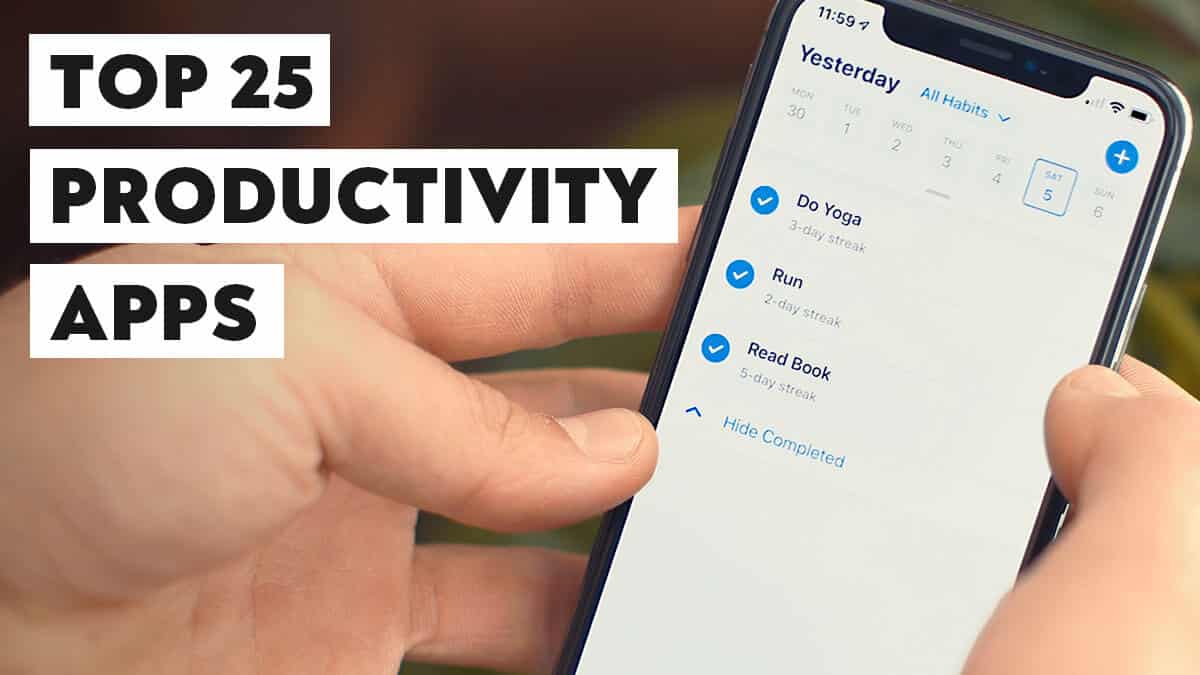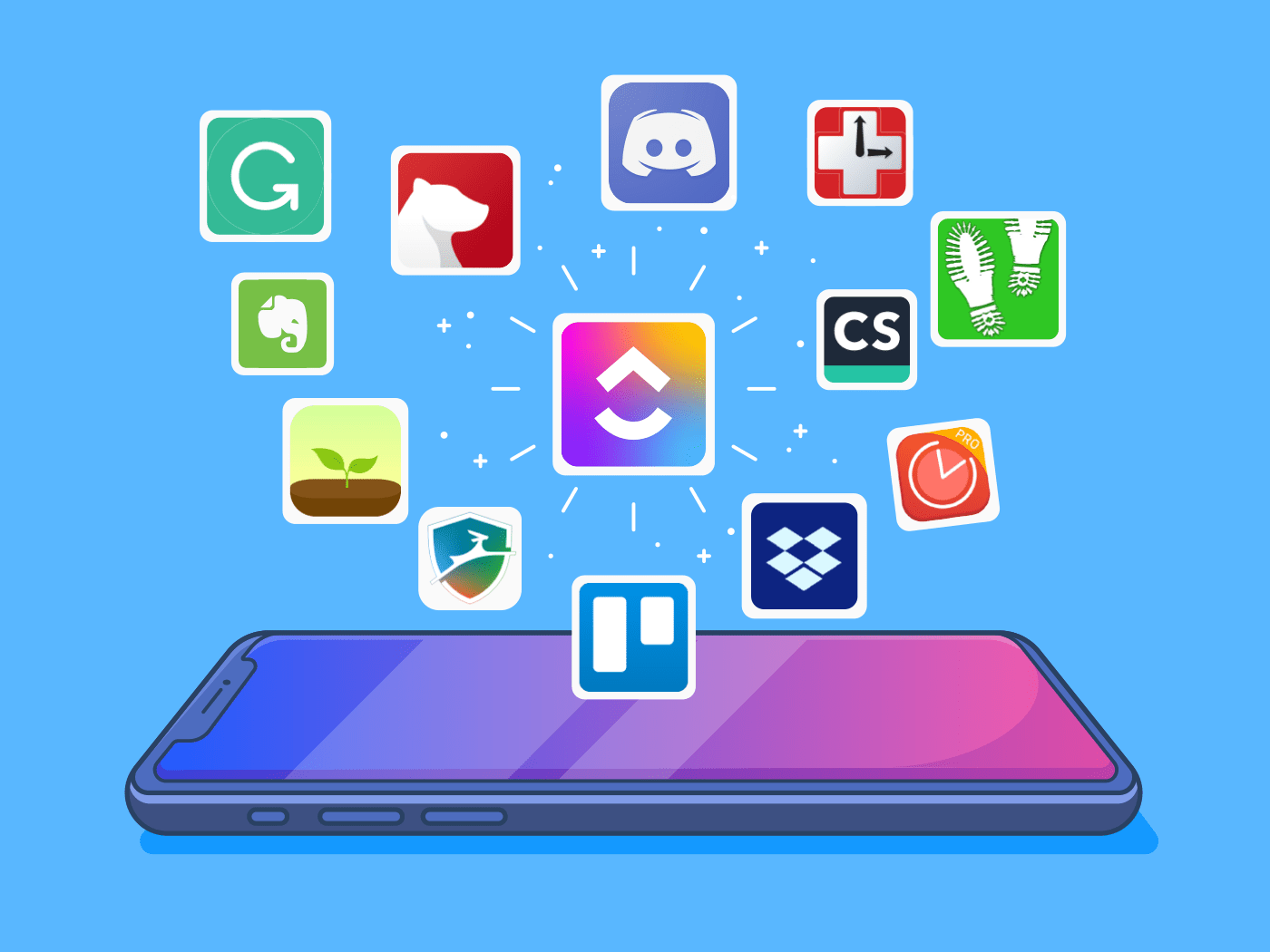Best productivity apps for mobile are the key to unlocking your potential and maximizing your productivity while on the move. With a plethora of options available, finding the perfect app to streamline your workflow and boost your efficiency can be a daunting task.
This guide will delve into the world of mobile productivity apps, providing you with the insights and recommendations you need to make an informed decision and elevate your productivity to new heights.
Productivity Apps for Mobile

In today’s fast-paced world, mobile productivity apps have become essential tools for professionals and individuals alike. These apps offer a range of features designed to enhance productivity, streamline workflows, and make the most of our time.
Productivity apps for mobile come in various forms, including task management apps, note-taking apps, calendar apps, project management apps, and more. Each type of app serves a specific purpose and can help users stay organized, prioritize tasks, collaborate with others, and achieve their goals.
Key Features and Functionalities
When choosing a productivity app for mobile, there are several key features and functionalities to consider:
- Task Management:Look for apps that allow you to create and manage tasks, set deadlines, assign priorities, and track progress.
- Note-Taking:Choose apps that provide a variety of note-taking options, such as text, audio, and images, and allow for easy organization and retrieval.
- Calendar Integration:Apps that integrate with your calendar can help you schedule appointments, track events, and stay on top of your schedule.
- Collaboration Features:For teams and projects, consider apps that offer collaboration features such as file sharing, commenting, and task assignment.
- Customization:Look for apps that allow you to customize your interface, workflows, and notifications to suit your preferences.
- Cross-Platform Compatibility:Choose apps that are available across multiple platforms, such as iOS and Android, for seamless access on all your devices.
Types of Productivity Apps

Productivity apps are designed to help users optimize their time, tasks, and workflow. They come in various forms, each tailored to specific productivity needs.
Task Management, Best productivity apps for mobile
Task management apps enable users to create, organize, and track tasks. They offer features such as task lists, priority setting, reminders, and progress tracking.
- Todoist
- Asana
- Trello
Note-Taking
Note-taking apps provide a digital space for capturing, organizing, and retrieving notes. They often include features like text editing, formatting, annotation, and synchronization across devices.
- Evernote
- Notion
- Google Keep
Calendar Management
Calendar management apps help users schedule appointments, events, and tasks. They offer features like calendar views, reminders, and synchronization with other devices.
- Google Calendar
- Apple Calendar
- Outlook Calendar
Project Management
Project management apps assist teams in planning, organizing, and executing projects. They provide features such as task allocation, collaboration tools, progress tracking, and reporting.
- Jira
- Monday.com
- Asana
Communication
Communication apps facilitate team collaboration and communication. They offer features like instant messaging, video conferencing, file sharing, and task assignment.
- Slack
- Microsoft Teams
- Zoom
Factors to Consider When Choosing an App
Selecting the most suitable productivity app requires careful consideration of various factors that align with your specific needs and preferences. Here are some essential criteria to evaluate when making a decision:
User Interface
- A user-friendly and intuitive interface is crucial for seamless navigation and efficient task management.
- Consider the layout, organization, and clarity of the app’s design.
- Ensure that the interface aligns with your workflow and preferences.
Compatibility
- Determine the compatibility of the app with your devices and operating systems.
- Consider whether the app supports multiple platforms, allowing for seamless syncing and accessibility across your devices.
Integration
- Evaluate the app’s ability to integrate with other productivity tools and services you use.
- Seamless integration enhances productivity by streamlining workflows and reducing the need for manual data transfer.
- Consider the specific integrations that are essential for your needs, such as calendar syncing, task management, or file sharing.
Customization Options
- Look for apps that offer customizable features to tailor the app to your specific requirements.
- Customization options may include personalized themes, adjustable settings, or the ability to create custom templates and workflows.
- Evaluate the extent to which the app allows you to personalize the experience to match your unique preferences and work style.
Support
- Consider the level of support provided by the app developer.
- Evaluate the availability of documentation, tutorials, and customer support channels.
- Responsive and reliable support ensures that you can resolve any issues or queries promptly.
When prioritizing these factors, consider your individual needs and preferences. Determine which criteria are most important to you and focus on apps that meet those requirements. By carefully evaluating these factors, you can select a productivity app that aligns with your workflow and maximizes your efficiency.
Benefits of Using Productivity Apps
Productivity apps on mobile devices offer a range of advantages that can significantly enhance personal and professional productivity. These apps streamline workflows, improve efficiency, enhance organization, and optimize time management, enabling users to accomplish more in less time.
Productivity apps provide several benefits, including:
Enhanced Organization
- Centralized task management: Productivity apps allow users to create and manage tasks in one central location, providing a clear overview of all pending items.
- Note-taking and document management: These apps offer note-taking capabilities and document storage, enabling users to capture ideas, create to-do lists, and access important documents on the go.
Improved Efficiency
- Automated tasks: Productivity apps can automate repetitive tasks, such as scheduling appointments, sending emails, or generating reports, freeing up time for more important tasks.
- Time tracking and analysis: These apps allow users to track how they spend their time, identifying areas for improvement and optimizing their workflow.
Enhanced Collaboration
- Real-time collaboration: Productivity apps facilitate real-time collaboration with colleagues, enabling teams to work on projects together from anywhere.
- Document sharing and feedback: These apps make it easy to share documents with others, receive feedback, and track changes, streamlining the review and approval process.
Optimized Time Management
- Prioritization and scheduling: Productivity apps allow users to prioritize tasks and schedule them effectively, ensuring that the most important tasks are completed on time.
- Reminders and notifications: These apps provide reminders and notifications for upcoming tasks, helping users stay on track and avoid missed deadlines.
Popular Productivity Apps for Mobile: Best Productivity Apps For Mobile
Productivity apps have become essential tools for mobile users looking to optimize their time and tasks. With a wide range of options available, choosing the right app can be a challenge. To help you make an informed decision, we’ve compiled a table comparing the key features and functionalities of five popular productivity apps for mobile:
The following table provides a comprehensive overview of the popular productivity apps for mobile, along with their key features, pricing, and user ratings. Each app has its own strengths and weaknesses, so it’s important to choose the one that best fits your individual needs and preferences.
| App Name | Type | Key Features | Pricing | User Ratings |
|---|---|---|---|---|
| Todoist | Task Management | Task lists, subtasks, project organization, collaboration, reminders, natural language processing | Free (limited features); Premium ($4/month or $36/year) | 4.8/5 (App Store); 4.7/5 (Google Play) |
| Evernote | Note-Taking | Notebooks, tags, search, collaboration, web clipper, audio notes, offline access | Free (limited storage); Premium ($7.99/month or $69.99/year) | 4.5/5 (App Store); 4.3/5 (Google Play) |
| Asana | Project Management | Project boards, tasks, subtasks, timelines, collaboration, file sharing, custom fields | Free (limited features); Premium ($10.99/month or $109.99/year) | 4.7/5 (App Store); 4.6/5 (Google Play) |
| Trello | Project Management | Kanban boards, lists, cards, collaboration, file attachments, automation | Free (limited features); Business Class ($10/month or $96/year) | 4.6/5 (App Store); 4.5/5 (Google Play) |
| Google Tasks | Task Management | Task lists, subtasks, reminders, integration with Google Calendar, collaboration | Free | 4.3/5 (App Store); 4.2/5 (Google Play) |
When choosing a productivity app, it’s important to consider your specific needs and preferences. If you need a comprehensive task manager with a wide range of features, Todoist or Asana may be a good option. If you’re looking for a note-taking app with powerful search and collaboration capabilities, Evernote is a solid choice.
For project management, Trello or Asana offer Kanban boards and other features that can help you visualize and track your projects.
Case Studies of Successful App Usage
Numerous individuals and businesses have harnessed the power of productivity apps to revolutionize their workflows and attain remarkable results. These case studies provide valuable insights into the transformative impact of these apps.
Increased Efficiency and Productivity
A multinational corporation implemented a productivity suite that streamlined communication, task management, and document sharing. This resulted in a 25% increase in productivity, as employees could collaborate more effectively and access information seamlessly.
Enhanced Collaboration and Teamwork
A non-profit organization utilized a project management app to facilitate collaboration among remote teams. The app enabled real-time communication, file sharing, and task tracking, fostering a sense of unity and improving project outcomes.
Improved Time Management
A small business owner implemented a time-tracking app to monitor employee hours and identify areas for improvement. The app provided detailed reports, enabling the owner to optimize schedules, reduce overtime, and increase overall efficiency.
Reduced Stress and Workload
A freelance writer utilized a task management app to organize projects, set deadlines, and track progress. The app helped the writer stay on top of multiple tasks, reduce stress, and improve work-life balance.
Personalized Workflows
A marketing agency implemented a customizable productivity app that allowed employees to tailor their workflows to specific needs. The app provided flexibility, enabling employees to choose the tools and features that best suited their roles.
Emerging Trends in Productivity Apps
The productivity app market is constantly evolving, with new trends and innovations emerging all the time. These trends are shaping the future of productivity apps, making them more powerful, efficient, and user-friendly than ever before.One of the most important trends in productivity apps is the increasing use of artificial intelligence (AI).
AI-powered productivity apps can automate tasks, provide personalized recommendations, and even help users learn new skills. For example, the app Todoist uses AI to help users prioritize their tasks and stay on track.Another important trend is the growing popularity of cloud-based productivity apps.
Cloud-based apps allow users to access their data from anywhere, on any device. This makes it easier for users to stay productive even when they’re on the go. For example, the app Dropbox allows users to store and share files in the cloud, making them accessible from any device.Finally, productivity apps are becoming increasingly integrated with other software and services.
This integration makes it easier for users to get work done, as they can access all of their tools and data in one place. For example, the app Zapier allows users to connect different apps and services, so that they can automate tasks and streamline their workflow.
New Features, Technologies, and Design Principles
The latest trends in productivity apps are driven by a number of new features, technologies, and design principles. These include:* Natural language processing (NLP): NLP allows productivity apps to understand human language, making it easier for users to interact with them. For example, the app Siri uses NLP to allow users to control their device and access information using voice commands.
Machine learning (ML)
ML allows productivity apps to learn from data, making them more personalized and efficient. For example, the app Google Calendar uses ML to learn users’ schedules and suggest appointments that are likely to be convenient.
Adaptive design
Adaptive design allows productivity apps to adjust their layout and functionality to different screen sizes and devices. This makes it easier for users to use productivity apps on any device, regardless of its size or shape.
Potential Impact on Mobile Productivity
The emerging trends in productivity apps are having a significant impact on mobile productivity. These trends are making it easier for users to get work done on their mobile devices, regardless of where they are or what they’re doing.For example, AI-powered productivity apps can help users automate tasks and stay on track, even when they’re on the go.
Cloud-based productivity apps allow users to access their data from anywhere, on any device, making it easier to stay productive even when they’re away from their desk. And integrated productivity apps make it easier for users to get work done by providing access to all of their tools and data in one place.As the productivity app market continues to evolve, we can expect to see even more innovative and powerful productivity apps emerge.
These apps will make it easier than ever for users to get work done, regardless of where they are or what they’re doing.
Best Practices for Using Productivity Apps

Optimizing the use of productivity apps on mobile devices requires a strategic approach. Effective implementation involves setting up apps efficiently, organizing them logically, and customizing them to suit individual needs. Maximizing app features and seamlessly integrating them into daily routines are crucial for maximizing their benefits.
By adhering to these best practices, individuals can leverage the full potential of productivity apps to enhance their efficiency, organization, and overall productivity.
Set Up and Organization
- Choose apps that align with specific productivity needs and goals.
- Set up apps with clear account information and preferences.
- Organize apps into folders or categories for easy access and navigation.
- Utilize widgets or app launchers for quick access to frequently used apps.
Customization
- Customize app settings to optimize functionality and user experience.
- Enable notifications and alerts for important reminders and updates.
- Create custom templates, shortcuts, or filters to streamline tasks.
- Integrate apps with other tools or services for enhanced functionality.
Integration and Maximization
- Establish a consistent workflow across different apps.
- Use automation features to reduce manual tasks and save time.
- Explore app integrations to connect with other tools and services.
- Regularly review and update app usage to ensure optimal performance.
Challenges and Limitations of Productivity Apps
Productivity apps on mobile devices offer numerous benefits, but they also come with potential challenges and limitations.
Data Privacy Concerns
Productivity apps often require access to sensitive information such as personal data, location, and browsing history. This raises concerns about data privacy and the potential misuse of information by third parties. To address these concerns, users should carefully review the privacy policies of apps before downloading and using them.
They should also be mindful of the permissions they grant to apps and regularly check their privacy settings.
Battery Consumption
Productivity apps can be battery-intensive, especially those that require constant internet access or run in the background. To minimize battery consumption, users should disable unnecessary notifications, close unused apps, and adjust screen brightness settings. Additionally, they can use battery-saving modes provided by their devices.
App Compatibility
Productivity apps may not be compatible with all mobile devices or operating systems. This can be a challenge for users who have older devices or use multiple devices with different operating systems. To avoid compatibility issues, users should check the app’s system requirements before downloading and ensure that their devices meet those requirements.
Future of Productivity Apps for Mobile

The future of productivity apps for mobile devices holds immense potential, driven by advancements in technology, user experience, and app integration. These apps will continue to evolve, shaping the way we work and manage our time.
As technology advances, productivity apps will leverage artificial intelligence (AI) and machine learning (ML) to provide personalized recommendations, automate tasks, and offer real-time insights. This will enhance efficiency and reduce the time spent on mundane tasks.
User Experience Enhancements
- Enhanced user interfaces will simplify navigation and make apps more intuitive to use.
- Voice control and natural language processing will enable hands-free operation and seamless interaction.
- Gamification and rewards will motivate users to stay engaged and productive.
App Integration
- Seamless integration with other apps and services will create a cohesive ecosystem for productivity.
- Cloud-based storage and synchronization will ensure data accessibility across multiple devices.
- Open APIs will allow developers to create custom integrations and extend app functionality.
Productivity apps will continue to empower users to streamline their workflows, collaborate effectively, and achieve their goals. They will become indispensable tools for individuals and businesses alike, transforming the way we work and manage our time.
Final Review
In conclusion, the landscape of mobile productivity apps is constantly evolving, offering a myriad of solutions to enhance your workflow and achieve your goals. By carefully considering your needs, exploring the available options, and implementing best practices, you can harness the power of these apps to transform your productivity and unlock your full potential.
Embrace the future of productivity on-the-go and experience the transformative benefits of mobile productivity apps.
Common Queries
What are the key benefits of using productivity apps on mobile devices?
Mobile productivity apps offer numerous benefits, including enhanced productivity, improved efficiency, better organization, and effective time management. They streamline workflows, facilitate task completion, and provide real-time access to your tasks and schedules, empowering you to stay organized and productive wherever you are.
How do I choose the best productivity app for my needs?
Selecting the ideal productivity app involves evaluating factors such as user interface, compatibility with your devices and operating system, integration capabilities with other apps and services, customization options, and the level of support provided. Prioritize these factors based on your specific requirements to find the app that best aligns with your workflow and preferences.